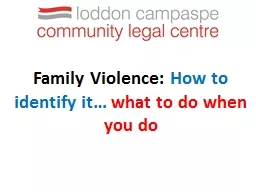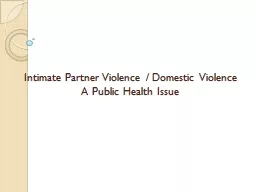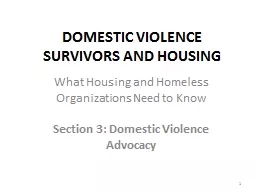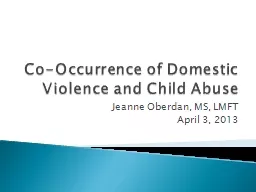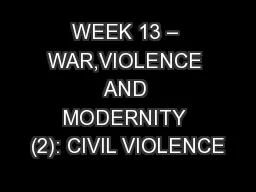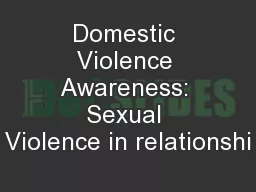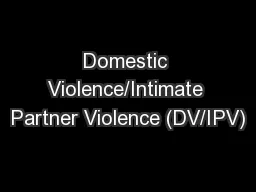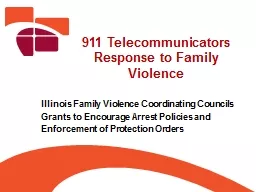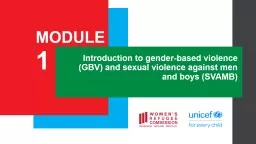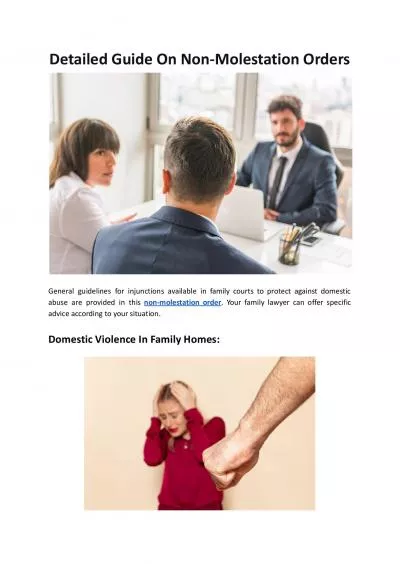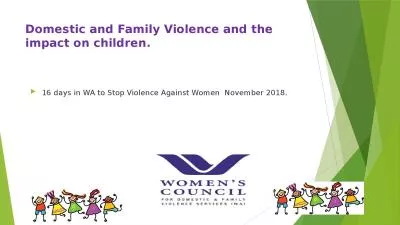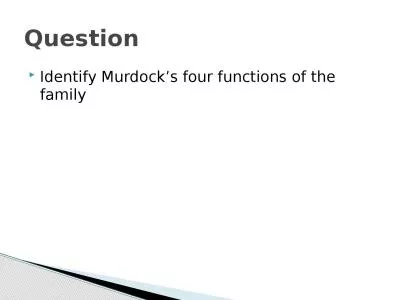PPT-Family Violence: How to identify it…
Author : giovanna-bartolotta | Published Date : 2019-11-08
Family Violence How to identify it what to do when you do Family Violence How to identify it what to do when you do Session broken down into two broad themes Family
Presentation Embed Code
Download Presentation
Download Presentation The PPT/PDF document "Family Violence: How to identify it…" is the property of its rightful owner. Permission is granted to download and print the materials on this website for personal, non-commercial use only, and to display it on your personal computer provided you do not modify the materials and that you retain all copyright notices contained in the materials. By downloading content from our website, you accept the terms of this agreement.
Family Violence: How to identify it…: Transcript
Family Violence How to identify it what to do when you do Family Violence How to identify it what to do when you do Session broken down into two broad themes Family Violence Training 1 How. Overview. 1. Domestic Violence 101. Definition. Dynamics . Statistics . 2. Domestic Violence and Homelessness. 3. A Survivor’s Story. 4. Issues for the Balance of State. Confidentiality . Coordinated Entry. A Public Health Issue. Boston Public Health Commission (BPHC). The Mission of the BPHC. is “. To protect, preserve, and promote the health and well-being of all Boston residents, particularly those who are most vulnerable. Section . 3: Domestic Violence Advocacy. 1. What Housing and Homeless Organizations Need to Know. Domestic Violence Advocacy. Trauma Informed, Survivor Driven. Strength Based . Emotional & Physical Safety Oriented. Jeanne Oberdan, MS, LMFT. April 3, 2013. ALIVE. Mission. ALIVE's mission is to provide counseling, emergency sanctuary and other critical. services to adults and children impacted by domestic abuse, as well as to increase. By Ian Kligman and Isabella D’Amico. A Brief Introduction. American media is filled with violent themes and images, which heavily reduces the way real life violence and war is looked at. Everything including television, movies, comic books and video games has been given a green light on use of graphic violence. This constant exposure to fictional violence changes the way we look at real violence.. Preliminary comments on Terrorism. Terrorism. Weapon of desperation used by the weak. Opposed by many mainstream revolutionaries e.g. Lenin and Bolsheviks – tended to strengthen state, not weaken it. The Counseling Center. Purdue University Northwest. SEXUAL violence in adults. Sexual Violence Statistics. According to the Centers for Disease Control and Prevention (2012),. 18.3% . of women reported experiencing forced sex at some time in their . Assistance Program . Department of Veterans Affairs. Jennifer Broomfield, LISW, JD. Program Manager, DV/IPV Assistance Program. Care Management and Social Work Services. Veterans Health Administration. 911 Telecommunicators Response to Family Violence Illinois Family Violence Coordinating Councils Grants to Encourage Arrest Policies and Enforcement of Protection Orders Mary Ratliff Program Director Reporting violence against women Lesson three: Communicating the results Taking care of yourself and others Violence against women and their children is common We can be almost certain that the issues we are raising will be directly relevant to some of the people in this room. 1. Module 1. 2. Brainstorm: . Defining gender-based violence (GBV). What does it mean? . Introduction. Module 1. 3. Power. Gender equality. Violence. Informed consent. Introduction. Module 1. 4. Power. Getting a non-molestation order is more difficult since the court must carefully consider whether to make someone homeless. 16 days in WA to Stop Violence Against Women November 2018.. Acknowledgement of Custodial Owners of Land . I acknowledge the . Whadjuk. people of the . Noongar. Nation as the traditional owners of this land .. Question. Sexual. Reproductive. Economic. Educational. Answer. What conclusion about the family did Murdock come to in 1940s?. Question. The family is inevitable and universal and is found in all societies .
Download Document
Here is the link to download the presentation.
"Family Violence: How to identify it…"The content belongs to its owner. You may download and print it for personal use, without modification, and keep all copyright notices. By downloading, you agree to these terms.
Related Documents

